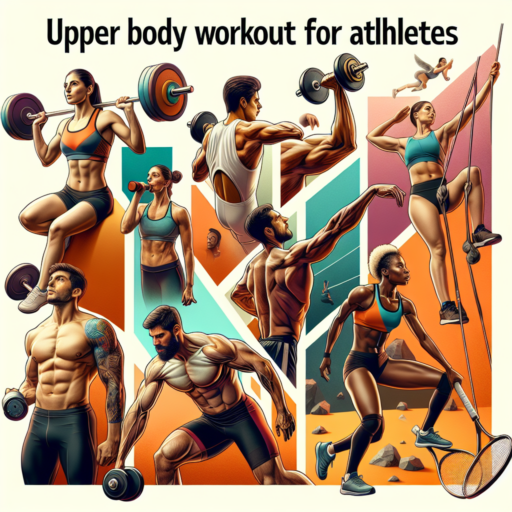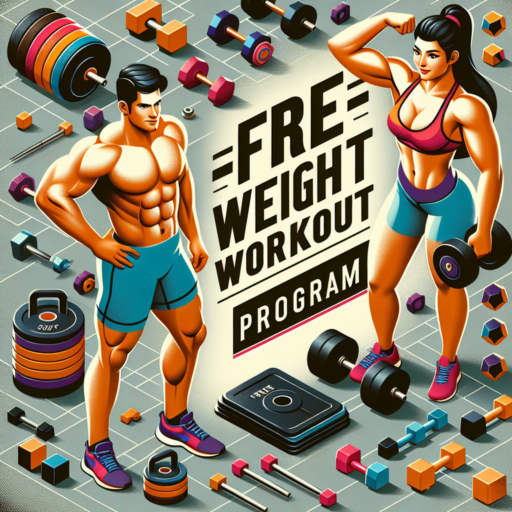No se han encontrado productos.
How to build upper body strength as a runner?
Building upper body strength is crucial for runners, not only to maintain balance and posture but also to enhance overall running performance. While running predominantly works the lower body, integrating upper body workouts can help improve endurance and reduce the risk of injuries. To embark on this journey, focusing on specific exercises and consistency is key.
Integrating Resistance Training
Incorporating resistance training into your routine is essential for building upper body strength. Exercises such as push-ups, pull-ups, and plank rows efficiently target the chest, shoulders, and back, offering a balanced strength development. These exercises can be done with minimal equipment, making them accessible for most runners. Committing to resistance training 2-3 times a week can lead to significant improvements in upper body strength over time.
Utilize Bodyweight Exercises
Bodyweight exercises are a runner’s best friend when it comes to building strength without adding bulk. Movements like dips, burpees, and handstand push-ups not only enhance strength but also improve muscular endurance. Incorporating these exercises into your training regimen ensures a full upper body workout without the need for weights, making them easy to include in any fitness plan.
Remember, improving upper body strength as a runner requires patience and persistence. Regularly engaging in these targeted exercises and gradually increasing the intensity will lead to optimal results, enhancing your running performance while keeping your body strong and balanced.
What upper body muscles are important for runners?
When it comes to running, the focus often leans heavily towards the power and endurance of the legs. However, the upper body plays a crucial role in the effective mechanics of a runner’s stride. The key upper body muscles that contribute to running efficiency include the pectorals, deltoids, trapezius, and the muscles of the core. Strengthening these muscle groups can enhance a runner’s posture, balance, and overall performance.
Pectoral Muscles
The pectorals, or chest muscles, are essential for maintaining a strong, upright posture during runs. These muscles work in conjunction with the shoulders and upper back to stabilize the upper body, reducing unnecessary lateral movement. This stability is vital for minimizing energy expenditure and maintaining a forward momentum, especially during long-distance runs.
Deltoids and Trapezius
The deltoids, situated at the shoulders, along with the trapezius muscles, extending across the upper back, shoulder, and neck, are pivotal in the running motion. These muscles aid in the efficient swing of the arms, which in turn, influences the leg movement and pacing. Strong deltoids and trapezius muscles contribute to a better arm swing, thus improving endurance and speed by promoting a more balanced and powerful stride.
Core Muscles
The core muscles, including the abdominals and lower back, are the foundation of a runner’s upper body strength. A strong core enhances stability and balance, which is particularly beneficial on uneven terrains or when changing directions rapidly. Furthermore, a robust core ensures an upright running posture, allowing for optimal lung capacity and, thereby, improved oxygen exchange during intense runs.
Do you need upper body strength to sprint?
While the primary focus for sprinting performance may seem to be on the power of the legs, upper body strength plays a crucial yet often underestimated role in enhancing a sprinter’s efficiency and speed. The propulsion that the upper body provides, especially the action of the arms, contributes significantly to a sprinter’s momentum and balance.
Engaging the upper body muscles, including the chest, shoulders, and back, adds to the force generated with each stride. This not only aids in stabilizing the torso but also fosters a more powerful leg drive, emphasizing how interconnected muscle groups are when aiming for maximal sprinting performance. As such, incorporating upper body strength exercises into a sprinter’s training regimen is essential for achieving comprehensive physical conditioning.
Besides physical strength, the synchronization between the movement of the arms and legs is paramount. This coordination ensures efficient energy utilization and can prevent unnecessary fatigue, allowing for sustained speed over the course of the sprint. This highlights the holistic approach required in sprint training, where the development of upper body strength is not isolated but integrated with the overall enhancement of athletic capabilities.
Does a runner need muscular strength?
The question of whether a runner requires muscular strength might not feature prominently when envisioning the sleek, enduring figure of a long-distance runner. Yet, the reality is that muscular strength plays a pivotal role in a runner’s performance, endurance, and injury prevention. This aspect of training is often overshadowed by the focus on cardiovascular fitness, but it is equally crucial.
One fundamental reason why muscular strength is essential for runners is its impact on running efficiency. Stronger muscles contribute to better form and mechanics during the run. This efficiency translates into the ability to run longer distances with less effort. Moreover, with enhanced muscular strength, especially in the lower body, a runner can produce more force with each stride, leading to improved speed and performance.
In addition to efficiency and performance benefits, strengthening muscles helps in preventing injuries. Running subjects the body to considerable impact, particularly on the joints and muscles of the lower body. Muscular strength acts as a buffer, absorbing some of the shocks and reducing the strain on joints. Strong muscles thus support not only the direct act of running but also safeguard the runner’s body against the wear and tear that comes with regular training.




